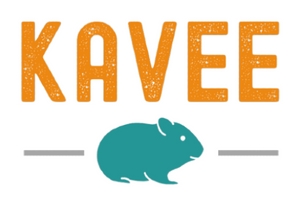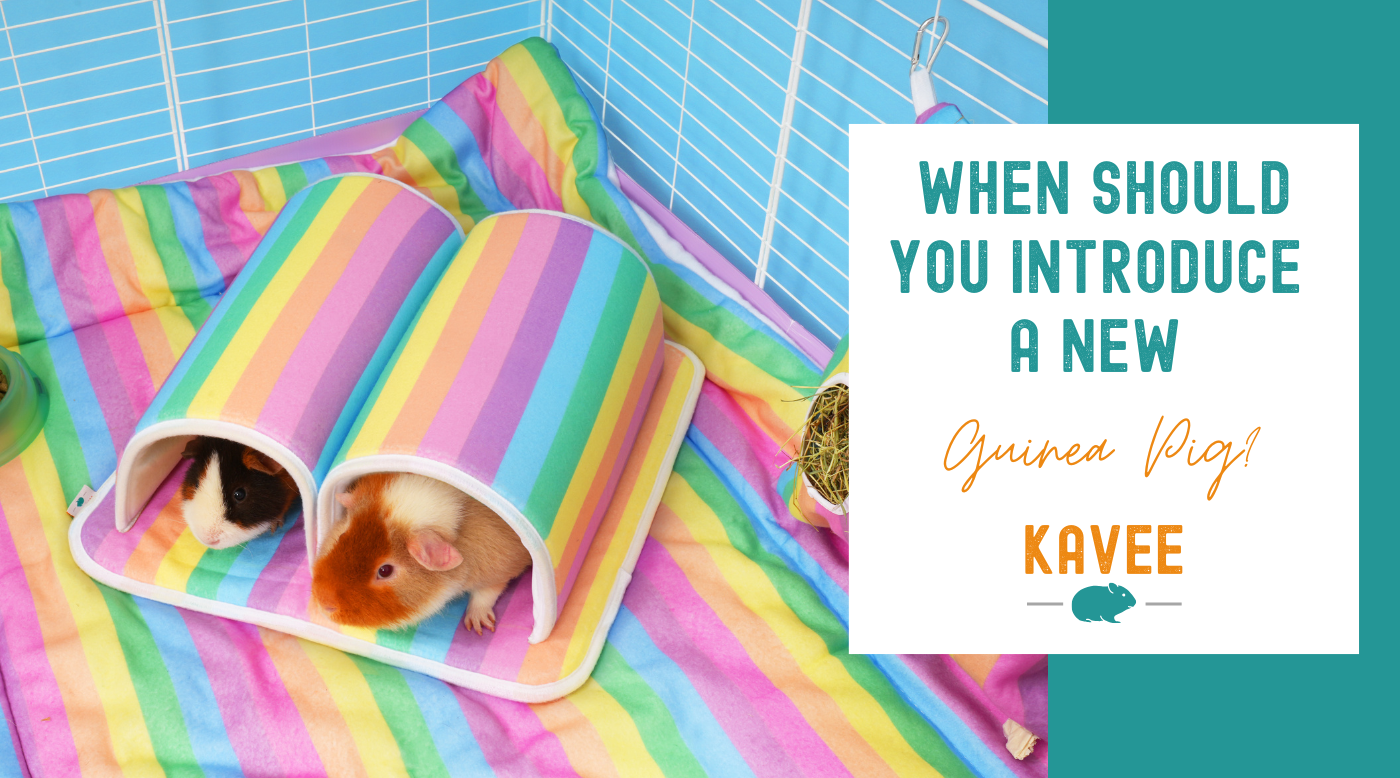Guinea pigs are addictive. One day you’re wondering whether you should bring a cute pair of piggies home, and the next thing you know, you’ll be expanding your set-up to welcome plenty more. As highly sociable animals, it only makes sense to give your guinea pigs some friends, but how do you know when it’s the right time to get a new piggy?
Do you have the time to dedicate to more piggies? And if yes, how do you plan on introducing a new piggy to your existing herd? Let’s take a look at what you can expect when expanding your furry family.
4 things to consider before adopting new piggies
So you’ve got a happy and cute herd at home of two or more piggies, but you can’t stop dreaming about bringing more floofs home. We can relate! Here are the things you should consider before taking the plunge and adopting more guinea pigs.
-
Do you have the space for more guinea pigs?
Despite being small pets, guinea pigs need plenty of space to thrive in life. Like hoomans, they need to exercise to stay healthy, and a cramped cage won’t allow them to zoom around to their heart’s content.
If you’re planning to adopt more piggies, you’ll need to expand your indoor guinea pig cage to accommodate the new furry friends. Every piggy deserves to have enough space to be happy & healthy, and enough guinea pig accessories to enjoy alone or with others.
It’s also advisable to get a separate cage to temporarily isolate the new guinea pigs for a couple of weeks after adoption. This is to reduce the risk of spreading any potential illnesses to your existing herd.
How to make more space for guinea pigs
Since space plays such an important role in the life of a guinea pig, you should plan how you will accommodate the extra pets in your home. From getting a bigger cage to doubling on accessories, here’s what you need when you’re about to increase your piggy family:
Get a cage you can extend - You could keep replacing your guinea pig cage to match the space requirements of your furry friends. Or you could purchase a large C&C guinea pig cage from the start, which can be customised to welcome any number of pets. We always recommend you go big, but the beauty of a C&C cage is that even if you start with a 4x2 cage, you can go up to a 6x2 by simply adding extra grids and coroplast bases. No need to buy a brand new cage!
Stock up on liners - A large guinea pig cage requires a larger number of liners to protect the whole floor and make it comfortable for your guinea pigs. And when your set is in the wash, it’s best to have another set of guinea pig bedding ready to replace it. Plus, these cage liners are available in so many colours and prints, you can have fun decorating your cage with them!
Get accessories & bowls for everyone - Regardless of how much your piggies may be best buds, they won’t be as inclined to share everything. In fact, forcing your guinea pigs to share accessories and food bowls is a guaranteed recipe for bickering! Make sure that each guinea pig gets their own bowl of food and water, and give them plenty of accessories so they won’t need to fight over the same one. For example, treat them to a double tunnel, which guarantees a great snoozing location for both piggy pals.
-
Do you have time for more guinea pigs?
The most important thing to consider when planning to adopt more guinea pigs is the time you have available. More piggies call for more piggy caring duties, so you need to be certain that your lifestyle allows for this extra commitment.
Even more so if you decide to adopt a long-haired guinea pig, which will add daily grooming to your piggy to-do list, or decide to care for a piggy with extra medical needs. No pet should be made to feel forgotten about, and the only way your new piggies will settle in nicely is if they get to spend time with you. So make time for them as soon as you bring them home, and plan the introductions with the rest of your furry family.
-
What is your guinea pig’s gender?
When planning the set-up for your guinea pigs, you should also take their gender into consideration. If you plan to introduce one boar to another lone boar, make sure you extend your cage to at least 5x2 to give each piggy their space. A smaller cage isn’t just unsuitable for their health, it’s also likely to encourage fighting between them. You also need to avoid keeping 2 male piggies in the same indoor guinea pig cage as a group of female piggies, as that’s more likely to lead to constant fighting for dominance.
Female guinea pig herds have fewer problems, but won’t guarantee a lack of arguing. Every guinea pig herd has its dominant and submissive piggies, regardless of gender. If you end up accidentally matching two dominant piggies together, they’re likely to squabble even if they’re both sows. Just keep an eye on them to watch out for any signs of aggression, and separate them if needed.
The most common guinea pig herd mixes the genders, usually made up of one or more female guinea pigs accompanied by one male piggy. It’s important that the male guinea pig in the cage is neutered, and that you don’t add any more male piggies to a mixed gender herd. This is because 2 or more male guinea pigs around female guinea pigs would lead to constant fighting over the attention of the females, even if neutered.
If you’re welcoming new piggies with your guinea pig giving birth, make sure you get the help of a vet to figure out the sex of your baby piggies. Sexing guinea pigs can be tricky to do alone, but here’s a video from Kavee Rescue’s Tara to help out:
-
What is your guinea pig's age?
Senior guinea pigs will benefit from the presence of a younger guinea pig in the herd. The infectious energy of a young piggy will encourage your old guinea pig to stay active and stave off boredom. While your overexcited young piggy will learn some valuable lessons from your wise senior!
Another upside of mixing up the ages of your guinea pig herd is that they’re less likely to fight for dominance, as a young piggy will naturally be more submissive to well-established dominant elders.
What to do when you first bring guinea pigs home?
To start, you’ll want to separate your existing herd and the new addition to the family. You should temporarily house the newbies in a different cage to prevent any potential illnesses from spreading, and also to keep any recently neutered boars safely aside as they recover from surgery. You can provide them with accessories that smell of one another to get them used to the different smells, but should only introduce them gradually. Get their separate cages closer, maybe using a divider.
Once they seem more relaxed around each other, you can let your new piggy join the herd. Then monitor them closely to see if they show any signs of aggression! Here is a video from Kavee Rescue’s Tara Richardson on how to bond guinea pigs:
How long does it take a guinea pig to settle into a new home?
There is no set time for guinea pigs to settle into a new home. Some might feel comfortable right away, while others will keep hiding until they feel braver. Just keep an eye on how your piggies interact, and if you spot them grooming each other and playing, you’ll know things are working out for them. If the piggies keep not getting along, or even attacking each other, then it’s best to separate them to prevent any accidents.
What to do if the guinea pigs don’t bond
Sometimes, you might have done everything right to introduce your guinea pig, but the bond will still fail. Every piggy has a different personality, so it’s impossible to plan for absolutely everything!
If you notice any signs of aggression between your guinea pigs, like teeth chattering, chasing, and attempts at hurting each other, then immediately separate them. These are signs showing that the bond has failed, and should stop all introductions.
Reach out to your local rescue to get help re-homing your guinea pig and to find a better match for your herd. The process of expanding your furry family can be tricky when done alone, and the expert help and advice provided by rescues is irreplaceable.
Introducing a new piggy after one dies
When a guinea pig crosses the rainbow bridge, there might be a window of time where your other piggy is left living alone. Make sure you dedicate time to support your lonely guinea pig at this difficult moment in their life. To you, it might seem too soon to think about adopting another guinea pig, but your pet mustn’t be left alone for too long. A guinea pig that lives alone is more likely to become depressed and lethargic.
Their furry friend will forever remain in their hearts, but there’s nothing that will help them through grief better than finding a new companion. The process of introducing a guinea pig left alone with a newly adopted pet is the same as usual, just take things slow and give them time to get used to each other.
Can guinea pigs and rabbits be kept together?
No, guinea pigs and rabbits can’t live together. Despite being both small pets, piggies and bunnies have very different needs and personalities, and both prefer the company of furry friends of the same species. Check out this blog for more information on keeping guinea pigs in a house with other pets.









